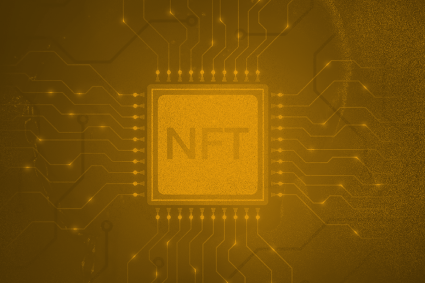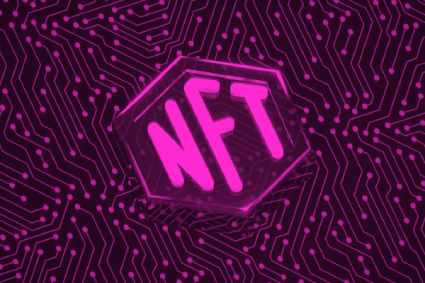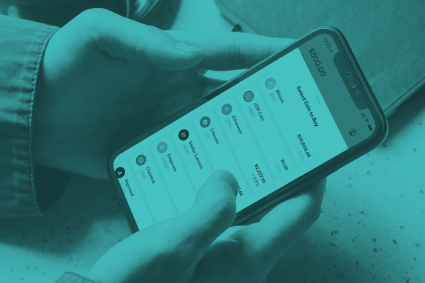It’s rare that technical terms from computer science become everyday words people throw around regularly. For example, we don’t walk around referring to the internet as the “transmission control protocol” or the “user datagram protocol.” Imagine if we called the internet the datagram instead.

However, using the technical term to refer to the everyday thing is what happened with blockchain. The technical definition became the word we use to explain an underlying network. While blockchain certainly sounds clinical, precise and ambiguous simultaneously, moving past the word to the actual innovation helps to underline the whole point of the crypto movement.
And it certainly helps give more context to Crypto Literacy Month.
At its core, blockchain is a digital ledger. It’s a record of transactions across a specially created network supported by nodes running software designed to communicate with the network.
A few critical components of these networks make them different from just a massively shared and publicly available spreadsheet. A few key concepts that make blockchain different than traditional networked computing include:
- Decentralized consensus — there are a few different ways to achieve consensus (bitcoin’s proof-of-work and Ethereum’s proof-of-stake are the two most common for now). A blockchain allows people to organize and coordinate without needing a centralized third party, eliminating platform risk, bottlenecks, and off-switches.
- Built-in incentives — One thing lacking from the traditional internet is a baked-in monetization structure to pay for things like network upkeep. Instead, massive corporations build data centers and then charge internet users for their attention via sophisticated advertising at the cost of privacy and security. The world’s major decentralized blockchain networks solve this problem by charging user fees and by incentivizing certain kinds of network nodes to maintain the blockchain via block rewards. With blockchain, a block reward is issued every time a new, verified batch of data is added to the chain.
- Cryptographic keys — Another facet of major decentralized blockchains is using cryptographic keys to access wallets where individual users can control data. Blockchain wallets have a public key, which allows people to interact, and a private key, which allows a single user total control. Blockchain’s secure wallet system is another significant innovation that will eventually change how people use the internet.
Below, we’ll try to understand blockchain better, looking backward and briefly at the horizon to identify where it is headed. Finally, we’ll understand why blockchain-based innovation occurs as we move through a massive digital transformation.
How we got to where we are now
The history of the internet is pretty fascinating — especially considering how recent it is. So it’s essential to have a basic understanding of how the internet developed and was adopted. Furthermore, it serves to enlighten us on why blockchain was created and what its innovation could mean for the future of the internet and its users.
Here are some quick highlights:
- The foundation of the internet was laid in the 1960s. Most point to an “Intergalactic Network” design from MIT’s JCR Licklider. Later, researchers at universities on the West Coast set up a file-sharing network. Then, the Department of Defense funded the ARPANET (Advanced Research Projects Agency Network).
- Over time, innovations like packet switching (sending info electronically) and other breakthroughs from the emerging field of computer science have led to more interconnectivity. Email and the @ sign came in the 1970s. By 1983, TCP/IP, the protocol that today’s internet is built on, was first defined. In 1989, the World Wide Web was created (again to help universities and researchers collaborate) to make accessing the internet more accessible.
- By the late 1980s, companies formed to make consumer email available. The availability of easy-to-use email accounts helped spur massive growth in internet users (email is often called the internet’s killer app). However, the ability to attach documents and files to emails would come a few years later.
- In the 1990s, new ways of interacting — and surfing the internet — came about during the browser wars, where different companies like Netscape and AOL competed to onboard users.
- Then, by the 2000s came Google, Facebook, Amazon, etc. — companies that created new kinds of internet utilities and leveraged the ability to find global reach through free apps that made everyday life easier. Based on pre-digital mass media models, the business side relied heavily on targeted advertising to pay for all of the free services. Also, a facet of Web2 — as this period would become known — was the idea of service and advertising platforms relying on user-generated content to sell more ads. But as the internet expanded into every corner of our everyday lives, concerns about data privacy, digital ownership, and monopolistic platform risk became more and more tangible.
- In 2009, the Bitcoin blockchain launched and eventually became the world’s largest decentralized computing network — and demonstrated a proof-of-concept for a new kind of internet business model. With blockchain, the infrastructure and applications are paid for by user fees (often called network fees or gas). Users maintain control of their data via a public/private key system — while at the same time, transactions and wallet details can be viewed on a public ledger, reducing the need for trust and massive Web2-type entities.
The launch of the Bitcoin blockchain signaled more than just a product or service for the internet — it enables a complete rebuild that is more user-centric and secure. In a way, bitcoin is like the original “Intergalactic Network” vision of the internet, only it’s more equitable and accessible — or at least it could be — than what we have so far.
Since bitcoin’s launch, several other essential blockchain projects have also found substantial worldwide traction (like Ethereum, Stellar, and Cardano, to name a few). But blockchain tech is still in its early days and still in search of its killer app (like the early days of email), which is still happening in real time.
Where is this all headed?
Blockchain-based technologies, products, and services will usher in a new era of the internet, most recently referred to as Web3.
Unlike previous versions of the internet that were based on centralized command and control mainly via data centers and/or service provider platforms, Web3 will enable a more secure, customizable, and resilient internet.
Here’s how:
- Financial products and services, such as payments and DeFi, were among the first widely adopted crypto applications. However, other blockchain-based products, such as decentralized social media, streaming, and file storage, are in development or have just launched.
- Last year was the year the NFT arrived. NFTs, or non-fungible tokens, gained popularity as a form of digital collectibles and for issuing verifiable artwork. Still, in the future, NFTs might also be used for things like digital titles to property or for creating unique work on the internet (like this blog post could be minted as an NFT to prove it is authentic). Despite the age and maturity of the internet, the idea of verifiable and enforceable digital property rights is relatively new and will open up many new opportunities.
- Along the same lines, digital property rights are the idea that with blockchain tech (or, more specifically, using wallets with private keys), internet users can be more in control of the data they create and move it from platform to platform. This development is a much different setup than what currently exists, where the platforms are in control of all user-generated data. This kind of data control and portability could have exciting outcomes on healthcare management and cut down on inefficiencies in other facets of life.
The list above is not exhaustive by any means. However, if you think about how the internet has changed almost everything we do now — from work and school to catching up with friends and participating in communities — you start to get a sense of the impact better internet architecture can make.
We’ll use the rest of Crypto Literacy Month to dive deeper into these topics and take a closer look at how cryptocurrencies and blockchain will impact our lives.



